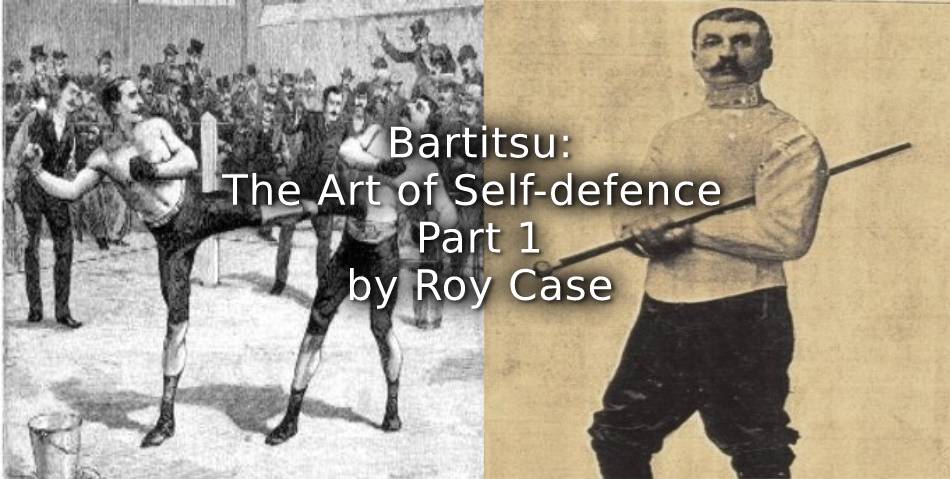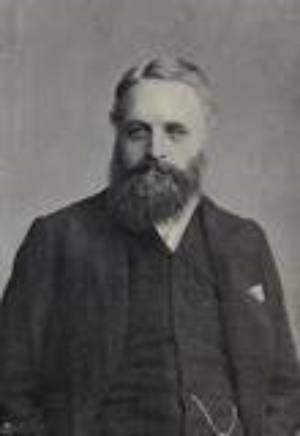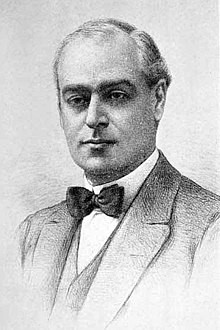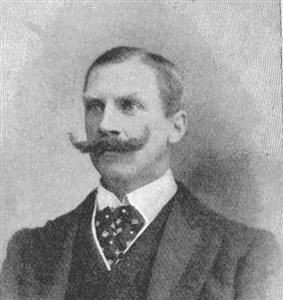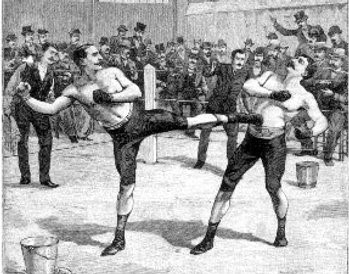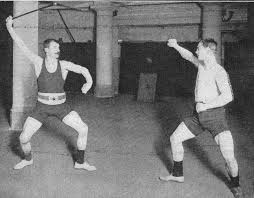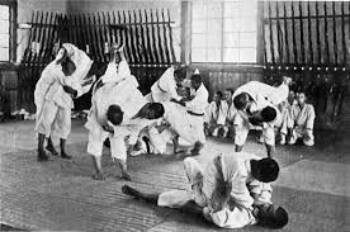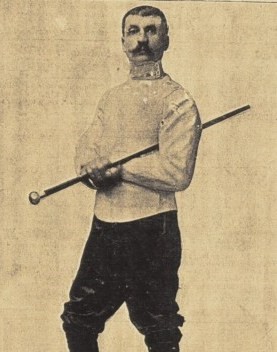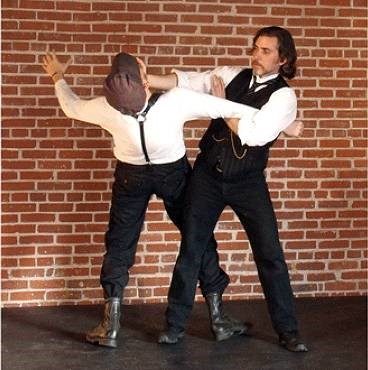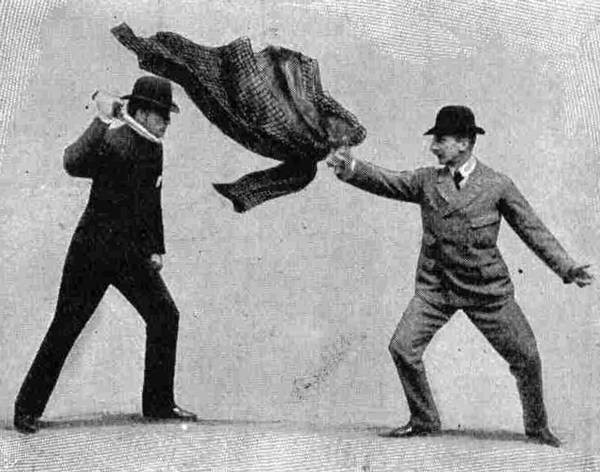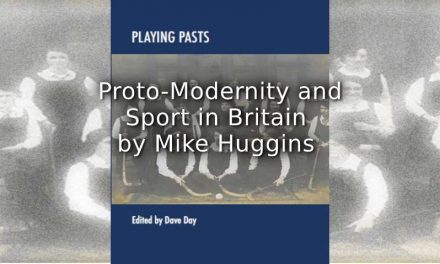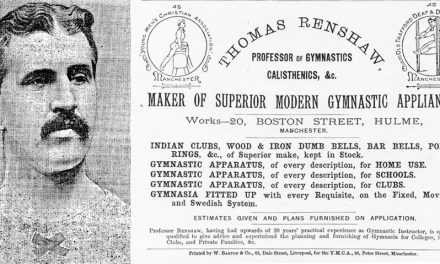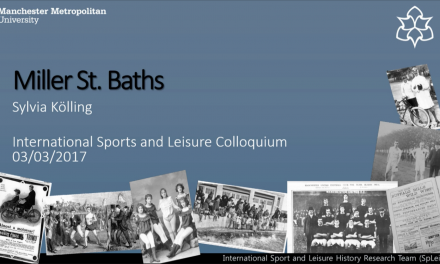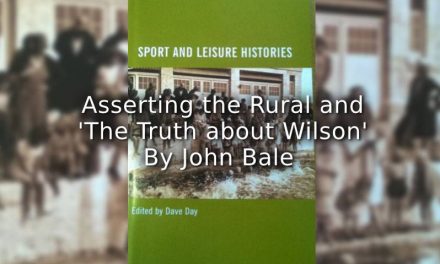The sixty-three year reign of Queen Victoria [1819-1901] was fast approaching its end, and with it the close of the Victorian era. During which the urban dwellers of the impoverished districts of London endured gruelling times. Particularly the slums of the infamous Whitechapel area of the East End, which were plagued by thieves and street ruffians, including a mounting number of brutal attacks, customarily upon female prostitutes, attributed to the mysterious serial killer known as Jack the Ripper. As a consequence, it is suggested that in 1898–1902 the mixed martial art system known as Bartitsu was developed as an effective means of self-defence, allowing men and women to live without fear of attack.
Bartitsu is identified as the first mixed martial art system to combine both the Western and Eastern martial arts systems utilising methods developed to incapacitate or restrain bigger and stronger assailants. At the time Bartitsu was not considered a competitive sport, its aim being to quickly take control and safely resolve a situation by integrating the fighting methods of early bare-knuckle boxing, with low kicks, grappling and rudimentary forms of weaponry.
Some historical scholars claim one of the sport’s earliest pioneers was the Frenchman, Michel Casseux [1794-1869]. Known as ‘Pisseux’, he is credited as an early advocate and tutor of a similar form of combat sport known as ‘boxe française’ or ‘French foot-fighting’, which combines the rudiments of a basic form of boxing with kicking techniques.
However, the most reputable account of the formative stages of martial arts in England began towards the end of the 19th century. When, after winning a competition arranged by the popular weekly magazine Tit-Bits, a young man named, Arthur Pearson, earned himself a job working for George Newnes Ltd. Acknowledged as the father of popular journalism, Sir George Newnes Bt [1851-1910], created several well known magazines of the day, including The Strand Magazine, Tit-Bits, The Westminster Gazette and The Wide World Magazine, which included stories written by Sir Arthur Conan Doyle, KStJ, L [1959-1930].
After serving Newnes for a period of six years, Pearson left to form his own publishing business in 1890. Within three weeks he had created Pearson’s Weekly, with the first issue selling a quarter of a million copies. Eight years later the maturing newspaper tycoon and publisher purchased the Morning Herald, and two years on merged it with his newest creation, the ‘halfpenny’ Daily Express.
- Sir George Newnes
-
Sir Cyril Arthur Pearson
1st Baronet, GBE
- Edward William Barton-Wright
In the spring of 1899 an article appeared in the periodical Pearson’s Weekly, claiming to introduce the ‘New Art of Self Defence’ to the city of London. The author of the article, and founder of the ‘New Art’, was Edward William Barton-Wright CE [1860-1951], an engineer who was sent to work in Japan for three years, where he was discovered jiu-jitsu [ko-ryu].
An accomplished boxer, Barton-Wright was fortunate to become one of the first westerners allowed to study jiu-jitsu. [He was tutored in the art by the Japanese teacher and athlete Kanō Jigorō [1860-1938], who also founded the sport of judo, the ‘gentle way’, in 1882. Originating from jiu-jitsu, Judo was the first Japanese combat martial art to gain widespread international recognition, and has since evolved into an Olympic sport.
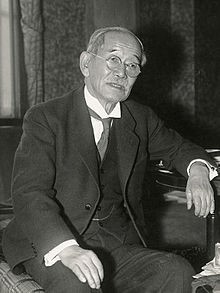
Kanō Jigorō circa 1937
On his return to England, enthused by what he had learned, Barton-Wright quit his engineering career and opened up a martial arts school, where he taught jiu-jitsu. He is now best remembered as a specialist in self-defence training, and as one of the first Europeans to learn and teach the Japanese systems of combat and self-defence.
Around the turn of the 19th century, Barton-Wright penned a series of articles for Pearson’s Weekly, detailing the self-defence systems and training methods of his ‘New Art’, which was destined to become the first combat system to combine the techniques of Asian and European martial arts. Barton-Wright named the combat style ‘Bartitsu’, creating the title ‘by combining the first part of his name with that of the Japanese close-combat fighting style jiu-jitsu. And in 1900 he opened the Bartitsu School of Arms and Physical Culture in London’s Soho, at 67b Shaftesbury Avenue.
The fighting style Bartitsu was a combination of several styles of martial art, embracing the core techniques of:
- Bare-knuckle boxing: The boxing style used during the ‘golden age’ of fisticuffs during the 19 and early 20 centuries, when fighters maintained a stiff, upright stance, with the leading hand usually extended, and the rear fore-arm covering the chest area.
- La Savate–French kick-boxing. The French kick-boxing style known as La Savate was developed from the 19 century methods used by street fighting sailors in the port of Marseilles. When it was essential for street-fighters to develop a fighting technique which did not involve the use of closed fists, since at the time they were considered deadly weapons and if used carried severe legal penalties. Consequently, La Savate consisted of different kicks, open handed slaps, and grappling.
The La Savate technique, which translates as ‘old shoe or boot’, is said to have been devised by the Swiss Maitre d’Armes, Pierre Vigny [born 1866], who specialised in the French kick-boxing combat sport. Also known as ‘boxe française’, ‘French boxing or French foot-fighting’, this method of combat only allows the use of the hands and feet as weapons, with fighters sporting specially designed boots for kicking.
- . Jiu-jitsu–Japanese wrestling. During the late 19 century jiu-jitsu became a popular sport among Westerners. It is believed the American statesman, and conservationist, President Theodore ‘Teddy’ Roosevelt Junior [1858-1919], who served as the twenty-sixth President of the United States from 1901 to 1909, also practiced this form of martial art.
- French kick-boxing
- Pierre Vigny Stick-fighting in the Bartitsu Club
- Jiu-Jitsu
- Pierre Vigny
- La Canne–Cane-fighting. Barton-Wright employed the Swiss master-at-arms, Pierre Vigny, to teach La Canne, also known as ‘cane’ or ‘stick-fighting’. It was common practice for upper-class gentlemen to carry a cane or umbrella, consequently Vigny modified the traditional form of stick-fighting to eliminate the threat of a street altercation by using the cane or umbrella to make strikes to the vulnerable parts of the body of an attacker.
- Improvised fighting: Barton also included several other creative means of self-defence by using improvised weapons, such as a coat or hat, as a means of distracting an assailant.
In the March edition of Pearson’s Magazine in 1899, Barton-Wright summarised the primary principles of Bartitsu as being:
- ‘To disturb the equilibrium of your assailant’.
- ‘To surprise him before he has time to regain his balance and use his strength’.
- If necessary to subject the joints of any parts of his body to strains that are anatomically and mechanically unable to resist’.
Since Bartitsu was a mixed bag of several martial arts techniques, there follows a brief description of how best to execute a few of its effective skills.
Defensive Bartitsu Moves:
Using a cloak, or an overcoat, as a means of defence:
‘Using a cloak or an overcoat is regarded as an effective defensive tool, even when an attacker is wielding a knife. By wearing the overcoat draped over the shoulders, without passing the arms through the sleeves, in the event of an attack by an assailant, take your right hand and grasp the left collar of your coat and, in one sweeping motion, cover your attacker’s head with the coat. Your assailant will be surprised and momentarily blind, which gives you plenty of time to punch him in the gut or give him several licks to the head.’
‘You can also choose to slip behind your opponent while you have the coat over his head, grab his ankle with your left hand, and simultaneously push his back so that he falls forward on his face. From here you can put your opponent in an appropriate jiu-jitsu hold until the police come’.
Using a hat for defence:
‘A hat can also be used to distract or temporarily blind an attacker. When an attacker gets near you, take off your hat with a sweeping motion, and burrow your opponents face into it. Either make a blow to his stomach or take him down to the ground to put him in a submission hold’.
‘A hat can also be used as a shield to defend yourself from punches or attacks from knives. Holding the hat firmly by the brim in your left hand, hold the hat away from your body to the side. If an attacker makes a thrust at you with a knife, catch the blow with your hat and make a blow to the attackers face with your free hand’.
Offensive Bartitsu Moves:
Basic Cane-fighting Techniques:
The jab:
The jab can be performed with either the point or the butt of the cane. Using the point is more effective and will cause greater amounts of pain. Perform the jab by quickly stabbing your opponent and retracting your hand quickly. The quickness of the jab makes it a difficult move to defend’.
The thrust:
‘The thrust is similar to the jab in that you use a stabbing motion. It differs from the jab because it’s delivered over a longer distance and requires full extension of the arm. Standing in an attack position, quickly lunge forward, and extend the tip of the cane towards your attacker. For added oomph, put as much of your body weight behind the thrust as you can’.
Cuts:
‘Cuts can be performed either high or low, in up, down, right, or left directions. A cut is performed with a chopping motion. Downward cuts are probably the strongest motion and are also the most difficult to defend’.
‘A chase lateral kick is performed crossing the rear foot behind the lead and then lifting the knee of the kicking foot towards the opposite shoulder. Add a hop before you strike. You can then strike with your foot aiming for the head, torso, or thighs of an opponent’.
Coup de pied bas:
‘This is a sweeping kick aimed at the lower legs of an opponent. The kick is performed by pivoting the kicking foot from the hip. Your leg remains fully extended. You can either try to sweep an opponent off their feet or simply aim for their knees or ankles to inflict some pain’,
- The Thrust
- Improvised fighting
Barton-Wright founded the Bartitsu School of Arms and Physical Culture, best known as the Bartitsu Club, along the lines of a typical Victorian sporting club, in which prospective members were required to submit a membership application, proposed and seconded by reputable members, which were later given due consideration by a Membership Committee.
Included among the list of prominent members was Captain Alfred Hutton FSA [1839-1910]. Born in Beverley, Yorkshire, Hutton began his education at the Blackheath Proprietary School in Lewisham, and later the University College, Oxford. However, upon the outbreak of the Indian Mutiny [1857-1859] his thoughts turned toward a military career, and he left the university without graduating and joined the Army. An officer of the King’s Dragoon Guards, Hutton was also known as a writer, antiquarian and swordsman, who was instrumental in helping originate the revival of English historical fencing.
The Bartitsu Club membership also included the prominent Scottish landowner and sportsman, Sir Cosmo Duff-Gordon, 5th Baronet DL [1862- 1931], perhaps best known for the controversy surrounding his escape from the RMS Titanic in 1912, which sank after striking an iceberg in the North Atlantic Ocean. More than 1,500 lives were lost out of a total of 2,224 passengers and crew. One of the few adult male survivors, Duff-Gordon survived along with his wife and her secretary, Laura Mabel Francatelli [1880-1967].
Born in Lambeth in 1880, Laura Francatelli was one of eight children. She boarded the Titanic at Cherbourg and was allocated cabin number E-36. Laura later recalled that on the night of the sinking she was roused when water began seeping into her cabin.
‘A man came and put a life preserver on me assuring me, it was only taking precautions and not to be alarmed. When we got on the top deck, the lifeboats were being lowered on the starboard side. I then noticed that the sea was nearer to us than during the day, and I said to Sir Cosmo Duff-Gordon, ‘We are sinking’, and he replied, ‘Nonsense, come away.’
Along with the Duff-Gordons, she was one of only 12 people who escaped in Emergency Lifeboat Number 1, which had a capacity of 40. The press dubbed the lifeboat ‘the millionaire’s boat’, and later on the passenger rescue steamship the RMS Carpathia, all but one of the lifeboat’s occupants posed for a group photograph. Laura died in Hampstead, London in 1967 aged 87.
Barton-Wright employed a number of experts to teach their various extensive martial arts skills in his academy, which were combined in the martial art system he defined as ‘self-defence in all its forms’.
He arranged for three Japanese practitioners of jiu-jitsu, Kaneo Tani, Seizo Yamamoto and nineteen-year-old Yukio Tanit, to move to London where they worked as instructors teaching the secret style of Japanese wrestling to the members of the Bartitsu Club. However, it was not long before Kaneo Tani and Seizo Yamamoto decided to return home to Japan, but Yukio Tani decided to remain, and was later joined by another young instructor, twenty year old Sadakazu Uyenishi. The Swiss master-at-arms Pierre Vigny taught La Savate and stick-fighting using a walking stick, and the Swiss amateur wrestler Armand Cherpillod [1876-1940] taught classes in traditional wrestling and physical culture, as well as teaching self-defence to wealthy Londoners.
Bartitsu was further promoted through a series demonstrations and challenge bouts. Advocates of Barton-Wright’s Japanese and Swiss close-combat style of fighting were pitted against fighters from a variety of other forms of combat sports. It is said Barton-Wright once challenged and defeated seven large men within three minutes, as part of a Bartitsu demonstration at St. James’s Hall. This demonstration earned him membership of the prestigious Bath Club, a London sports themed gentlemen’s club established in 1894. He also received a Royal Command to stage a demonstration before the eldest son of Queen Victoria, Edward, Prince of Wales [1841-1910], but suffered an injury to his hand which prevented him from appearing.
Such challenges proved to be the personification of the early mixed martial arts mania, taking its place almost a century later in the 1990s.
The Bartitsu Club also became the headquarters of a group of fencing historians managed by Captain Alfred Hutton, who taught fencing and swordsmanship, along with stage combat to notable members of London’s acting profession, although Barton-Wright did not consider such techniques as a true Bartitsu skill.
In mid-1901 the catalogue of skills taught at the Bartitsu Club was expanded to include special breathing exercises under the tuition of the well-known voice teacher and speech therapist, Mrs. Kate Behnke [1837-1918], who just happened to be a near neighbour of the Bartitsu founder Barton-Wright. Kate Behnke was an English actress who became a speech clinician, specialising in voice coaching
As well as the combat gymnasium, the Bartitsu Club also housed a well-equipped division incorporating a wide range of electrotherapy machinery.
In an article published in ‘Sandow’s Magazine of Physical Culture’ in 1901, journalist Mary Nugent [1843-1935] described the Bartitsu Club as
‘a huge subterranean hall, all glittering, white-tiled walls, and electric light, with ‘champions’ prowling around it like tigers’.
The Bartitsu Club also admitted female students, with stick-fighting and jiu-jitsu promoted primarily as a method of women’s self-defence.
Born in Bath, Somerset, Edith Margaret Garrud [1872–1971] was among the first female professional martial arts instructors in the Western world. In 1899 she was initially taught jiu-jitsu and the Bartitsu techniques by Edward Barton-Wright, and five years later became a student at the jiu-jitsu school of the former Bartitsu Club instructor Sadakazu Uyenishi [Born 1880] in Golden Square, Soho. When Uyenishi left England in 1908, Edith’s husband William took over the Golden Square school as owner and manager, and Edith began teaching classes for women and children.
The Garruds further popularised jiu-jitsu by organising exhibitions in London, and writing magazine articles. In 1907 Edith featured in a short film titled ‘Jiu-jitsu Downs the Footpads’, and the following year taught classes in jiu-jitsu and self-defence for the Suffragette Bodyguard Unit of the Women’s Social and Political Union [WSPU] and the ‘Suffragettes Self-Defence Club’, which was only open to members of the Suffrage movement. From 1911 the classes were based at the Palladium Academy, a dance school in Argyll Street in London’s West End.
In 1911 Edith choreographed the fight scenes for the play ‘What Every Woman Ought to Know’, and in August that same year one of her articles on the subject of women’s self-defence was published in the magazine ‘Health and Strength’, established in 1898 it is the world’s oldest physical culture magazine.
Article of © Roy Case
Read Part 2 HERE

